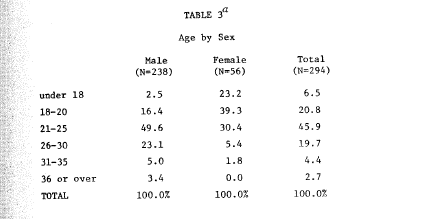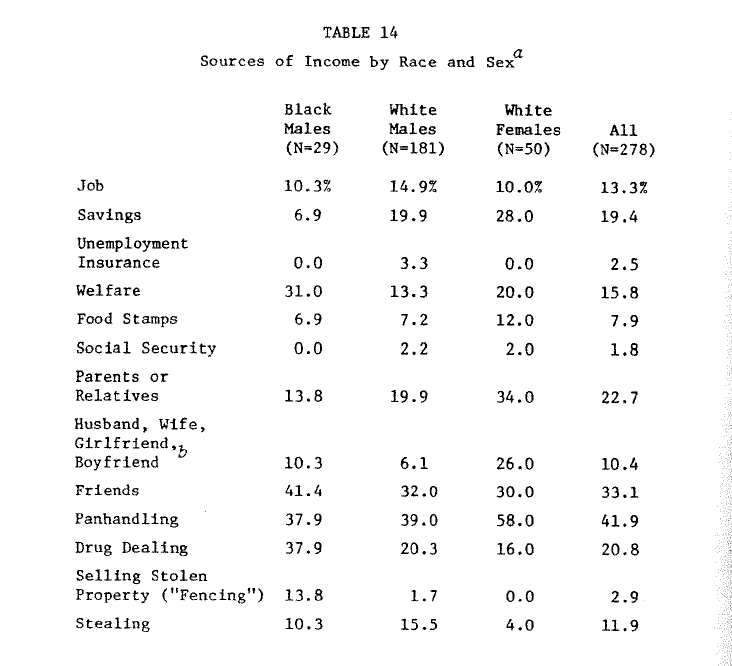Down and Out in Berkeley—a study funded by a municipal Community Affairs Committee—describes the state of street life in the period following the influx, in the 1960s, of runaways and other transient groups.
The study offers a survey of the demographics, background, and self-understanding of “street people,” and of the resources they require to survive and eventually to make it off the streets. It also underlines how, by the mid-1970s, the population on the street had shifted. As Telegraph Avenue bookseller Fred Cody remarked in the study’s foreword, “The transient and homeless of the present day South Campus have little in common with the hippies of past years.”
The study noted that the homeless of the South Campus area had an unusually large population of women: “Of the 295 respondents, 239 (81%) are males and 56 (19%) are females. The percentage of women found in this census is unusually high; the only  comparable studies of homeless and transient populations report, at best, a ratio of 12 men to every woman.” These women, the report observed, tended to be younger, too, than the men surveyed. (These demographic factors—the relative youth of the women and their relatively small numbers among the population of street people—may have made them more vulnerable to the abuse they sometimes faced.)
comparable studies of homeless and transient populations report, at best, a ratio of 12 men to every woman.” These women, the report observed, tended to be younger, too, than the men surveyed. (These demographic factors—the relative youth of the women and their relatively small numbers among the population of street people—may have made them more vulnerable to the abuse they sometimes faced.)
Table 14 offers insight into the sources of income for those on the street, indicating certain lifestyle differences between women and men in terms of their economic means. As the table shows, white females generated income from parents or relatives in a higher percentage than all men in the survey. Additionally, girls seemed to be able to rely on personal savings, panhandling, and the financial support of significant others more than men.
In the report’s preface, Fred Cody (of Cody’s Books) sketches the mission of the Community Affairs Committee that sponsored the report as well as the history of the South Campus neighborhood from the mid-’50s to the mid-’70s.
* * *
Jim Baumohl, the co-author of this study, is now Professor of Social Work at Bryn Mawr College. In response to a request to republish his work on this site, he wrote “I don’t like DOWN AND OUT IN BERKELEY, and I find some of it embarrassing. I was barely 24 years old, and while I had worked on Telegraph Avenue and in the larger south campus for 4 years by then and understood some things very well, I was dense as a black hole about others. In particular, I can’t think of anything pertaining to women that isn’t superficial or just wrong. There is a passage on coercive sexual relations that should never have been written without substantial elaboration of the experiences of the people involved. Without that, it makes me wince.”
